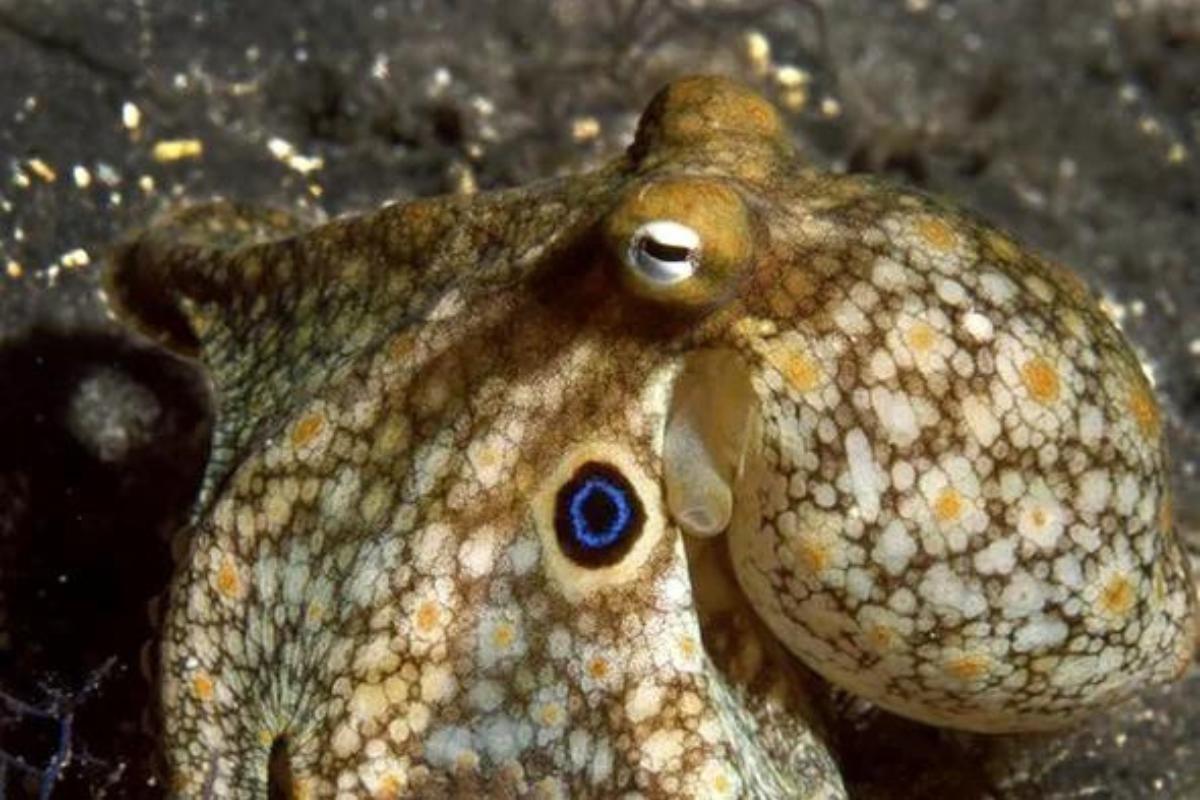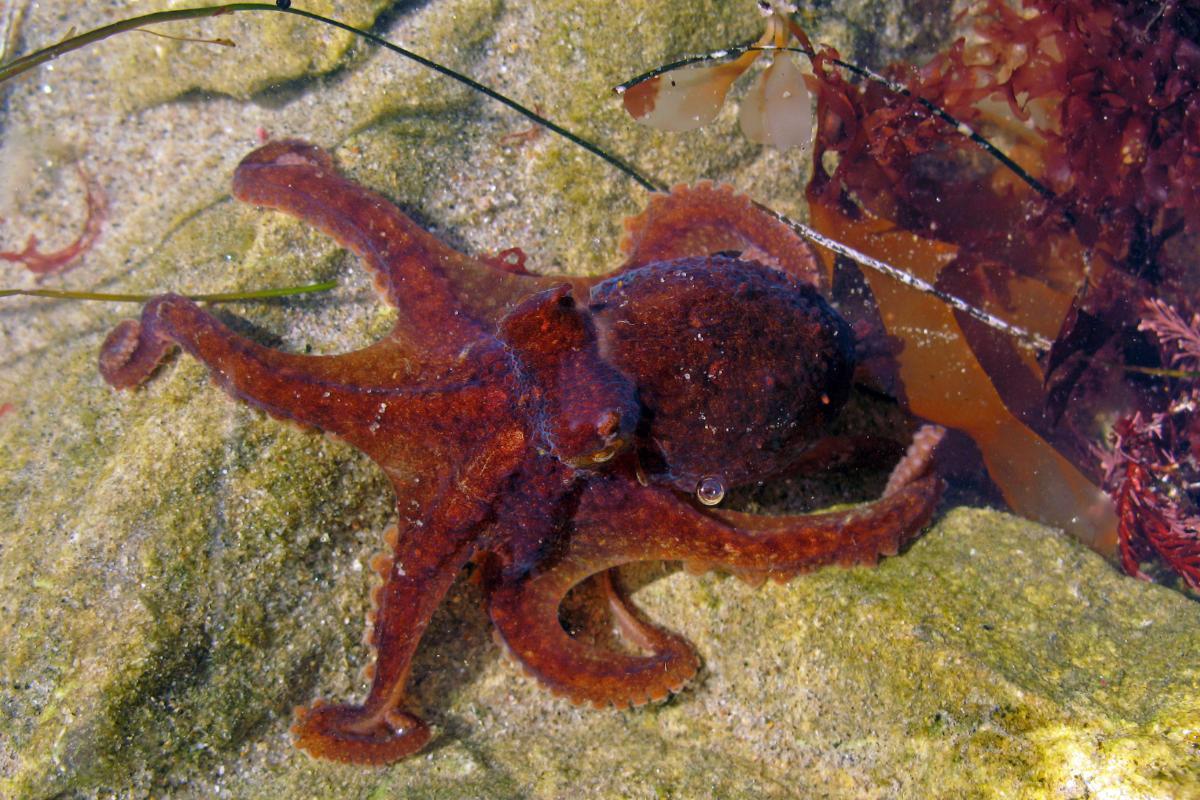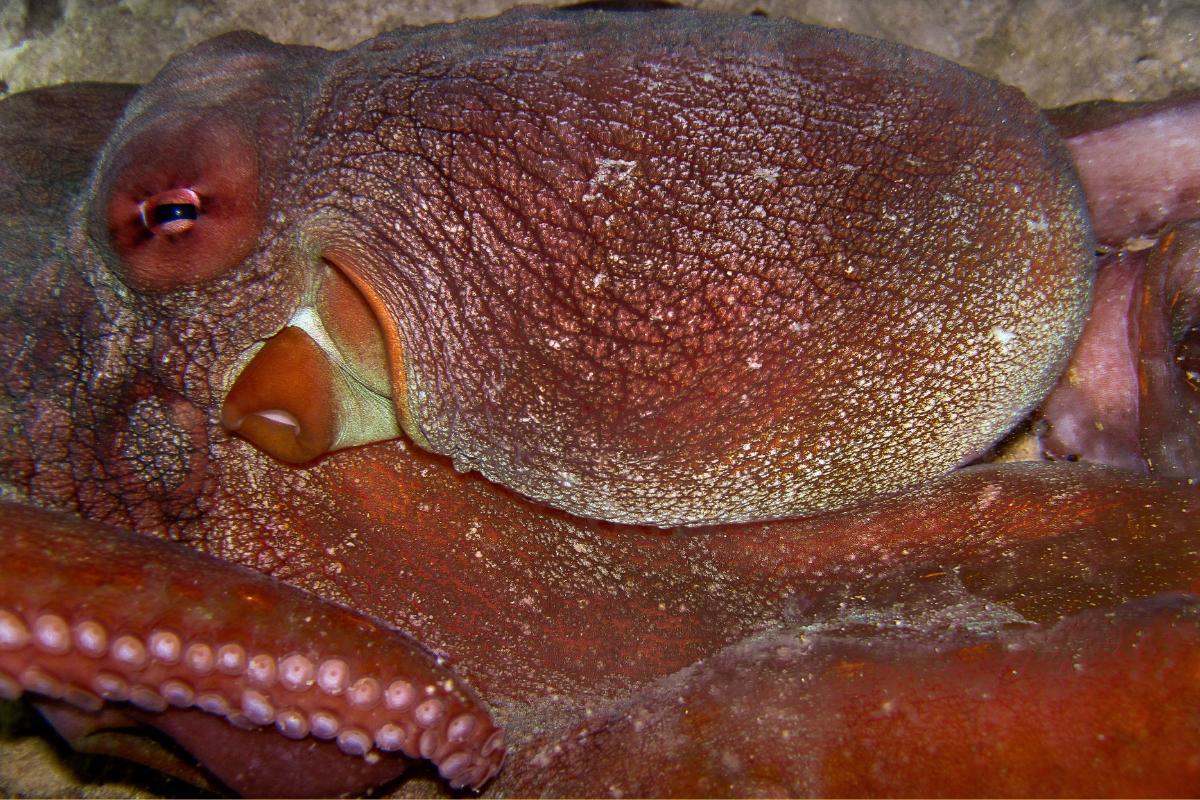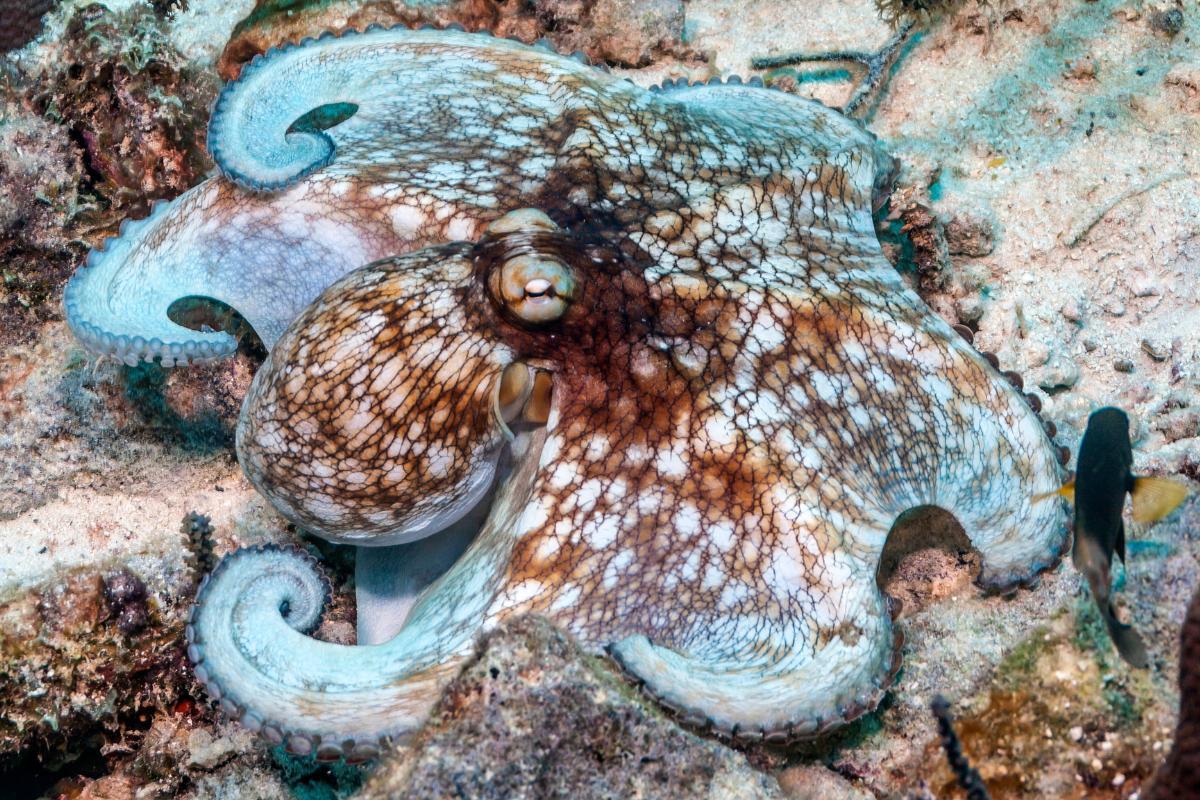The Venomous World of Octopuses - Uncovering the Deadliest Species


Journey into the depths of the ocean and discover the diverse and fascinating world of octopuses. These remarkable creatures possess a unique combination of beauty and power, with their mesmerizing patterns, intriguing adaptations, and potent venom that serves as a formidable defense mechanism.
Join us in this article on AnimalWised as we explore the top 10 most venomous octopus species, delving into their captivating characteristics, behaviors, and ecological significance.
- Blue-ringed octopus (Hapalochlaena sp.)
- Atlantic pygmy octopus (Octopus joubini)
- California two-spotted octopus (Octopus bimaculatus)
- Giant Pacific octopus (Enteroctopus doflein)
- Common manta octopus (Tremoctopus violaceus)
- Eastern Pacific red octopus (Octopus rubescens)
- Seven-armed octopus (Haliphron atlanticus)
- Day octopus (Octopus cyanea)
- Maori octopus (Macroctopus maorum)
- Caribbean reef octopus (Octopus briareus)
Blue-ringed octopus (Hapalochlaena sp.)
Living in the vast Pacific and Indian Oceans, blue-ringed octopuses, belonging to the Hapalochlaena genus, can be found from Japan to Australia.
These small creatures, usually measuring around 20 centimeters (approximately 7.9 inches), typically have a camouflage of brown or yellow tones. However, when threatened, their skin transforms into a striking display of vibrant blue rings or patterns, serving as a clear warning to potential predators.
Despite their small size, blue-ringed octopuses carry one of the most potent venoms in the marine world. Their toxin, containing tetrodotoxin, a neurotoxin known for its deadly potency, can be fatal to humans.
Unlike other venomous creatures whose bites often cause immediate pain, the sting of a blue-ringed octopus is surprisingly painless, often leaving victims unaware of their envenomation until the onset of severe symptoms. A single blue-ringed octopus harbors enough venom to potentially endanger multiple individuals.
While fatalities are relatively uncommon due to timely medical intervention and the availability of antivenom in certain areas, encounters with these octopuses demand extreme caution.
Learn more the culinary preferences of the blue-ringed octopus, the underwater assassin with a deadly bite. Read more here.
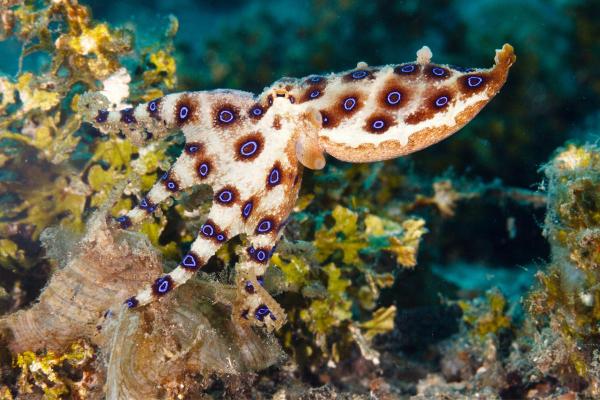
Atlantic pygmy octopus (Octopus joubini)
The Atlantic pygmy octopus (Octopus joubini) is a small but venomous creature that lives in the Gulf of Mexico and Caribbean Sea.
It typically measures about 15 centimeters (5.9 inches) in length, including its arms, and has an orange coloration. Like other octopuses, it possesses chromatophores, which allow it to make slight color adjustments to blend in with its surroundings.
While no documented incidents exist of encounters between the Atlantic pygmy octopus and humans, it is known to deliver venomous saliva to incapacitate its prey, which primarily consists of crabs and snails. The octopus' venom is not fatal to humans, but it can cause pain, swelling, and numbness.
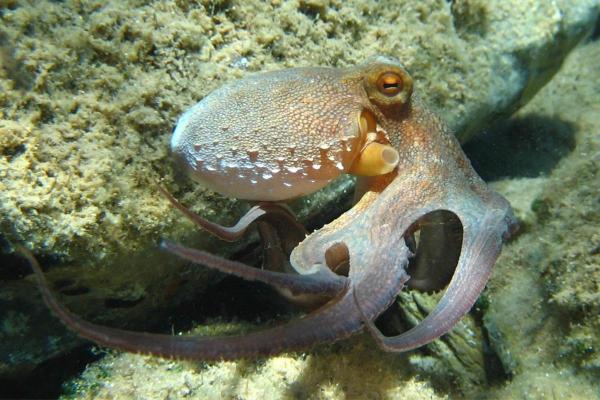
California two-spotted octopus (Octopus bimaculatus)
Inhabiting the vast expanse of the Pacific Ocean, the California two-spotted octopus (Octopus bimaculatus) is a venomous creature found from the United States to Mexico. It dwells in rocky and reef areas, typically venturing up to depths of about 50 meters (164 feet).
Characterized by a mottled light brown coloration, the California two-spotted octopus is distinguished by two conspicuous spots beneath each eye. These spots serve as a unique identification mark and a potential warning signal to predators.
Measuring up to 85 centimeters (33.5 inches) in length, this venomous octopus possesses the remarkable ability to change its color, enabling it to blend seamlessly into its surroundings for both hunting and evading predators.
While there have been no reported adverse effects on humans from the California two-spotted octopus' venom, this creature utilizes its venomous saliva to paralyze its prey, primarily crabs and shrimp, before consumption. Its potent venom allows it to effectively capture unsuspecting prey.

Giant Pacific octopus (Enteroctopus doflein)
In the vast expanse of the northern Pacific Ocean, from the shores of Japan to the rugged coastline of Russia, a colossal invertebrate reigns supreme – the Giant Pacific Octopus (Enteroctopus dofleini).
This awe-inspiring creature holds the distinction of being one of the largest venomous species globally, capable of reaching an impressive weight of up to 15 kilograms (33 pounds) and a staggering length of over 4 meters (13 feet).
Despite its formidable size, the Giant Pacific Octopus is a remarkably adaptable creature, thriving in a variety of habitats. While it has a preference for sandy seafloors littered with shells, it can also be found in rocky or reef environments. This versatility reflects its opportunistic hunting strategy, utilizing these shelters to ambush unsuspecting prey.
Similar to other octopus species, the Giant Pacific Octopus possesses a potent venom that serves as a crucial weapon in its hunting repertoire. This toxic saliva effectively paralyzes its prey, primarily crabs and other crustaceans, making them easy targets for these formidable predators. While no incidents involving humans have been reported, it is important to exercise caution when encountering these creatures.
Venture beyond the venomous world of octopuses and uncover the secrets of their fascinating brainpower in our complementary article
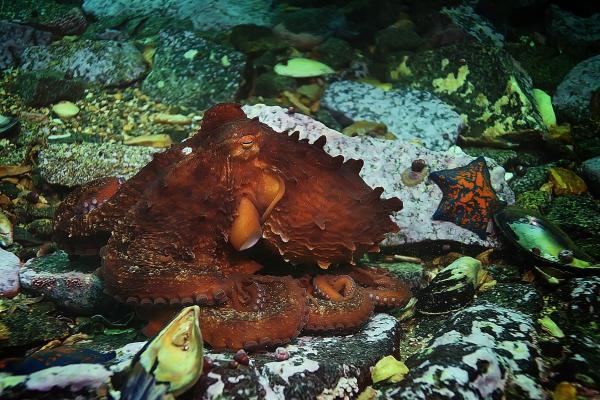
Common manta octopus (Tremoctopus violaceus)
The species scientifically named Tremoctopus violaceus is distributed in the Atlantic Ocean, including the Gulf of Mexico, the Caribbean Sea, and the Mediterranean. These venomous octopuses exhibit a significant sexual dimorphism, where the males are small, approximately 2.4 centimeters (less than an inch), while the females surpass one meter in size.
A distinctive trait of this species is its observed behavior with the tentacles of the Portuguese man-of-war (Physalia physalis), a marine hydrozoan known for its venom, which can be lethal to humans. It is presumed that the common blanket octopus uses the detached arms from the Portuguese man-of-war as a defensive weapon. This behavior designates it as a venomous octopus found in the Mediterranean and other regions within its distribution area.
Source image: Bermuda Biology

Eastern Pacific red octopus (Octopus rubescens)
Along the vast Pacific coastline, from the chilly shores of Alaska to the sun-kissed beaches of Mexico, a captivating creature resides – the red-hued venomous octopus, scientifically named Octopus rubescens.
This mesmerizing invertebrate typically measures up to approximately 40 centimeters (15.7 inches), including its mantle and outstretched arms, while weighing around 150 grams.
Octopus rubescens is a master of disguise, capable of transforming its appearance to seamlessly blend into its surroundings. Its typical red coloration can shift dramatically during hunting, morphing into shades of brown, yellow, or even adorned with white spots. Alongside these color changes, the octopus' skin texture also alters, further enhancing its camouflage capabilities.
This remarkable ability to change color serves a dual purpose: protection and predation. When threatened, the octopus' color transformation acts as a warning signal to potential predators, discouraging them from pursuing the camouflaged creature. Conversely, during hunting, the octopus utilizes its color-shifting prowess to mimic surrounding elements, ambushing unsuspecting prey.
As a venomous octopus, Octopus rubescens possesses a potent venom that plays a crucial role in its hunting strategy. When capturing prey, the octopus delivers a swift injection of its paralyzing venom, effectively immobilizing its target. This venomous saliva primarily targets crabs and other crustaceans, ensuring the octopus' survival and sustenance.
From poisonous bites to captivating reproductive behaviors, embark on a journey of octopus discovery. Read more about their unique reproductive cycle here.
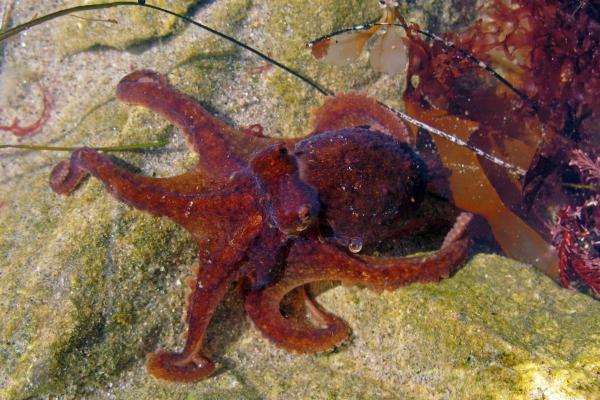
Seven-armed octopus (Haliphron atlanticus)
In the vast expanse of the world's oceans, from the balmy tropics to the frigid arctic regions, reigns a creature of remarkable size and intriguing adaptations – the seven-armed octopus (Haliphron atlanticus).
While it indeed possesses eight arms, one of them, located near the right eye of males, is specifically adapted for reproductive purposes and resides within a protective sac, making it less visible. This sizable creature commands respect with its impressive dimensions, weighing around 70 kilograms (154 pounds) and reaching a staggering length of about 4 meters (13 feet).
Despite its imposing size, the seven-armed octopus' venom poses little threat to humans. However, for its intended prey, it proves to be a formidable weapon.
This venomous creature has been observed utilizing a unique hunting strategy, enveloping itself in the tentacles of venomous jellyfish, effectively acquiring additional toxic substances that enhance its own venom. This behavior demonstrates the octopus' remarkable adaptability and resourcefulness.
The seven-armed octopus inhabits a wide range of depths, from the shallow waters of the continental shelf to the abyssal plains, reaching depths of up to 2,000 meters (6,562 feet). This broad distribution reflects its ability to thrive in a variety of marine environments.
Despite its enigmatic nature and impressive size, the seven-armed octopus remains relatively elusive, rarely encountered by humans. Its deep-sea habitat and nocturnal habits contribute to its mystique. However, through continued scientific research, we are gaining a deeper understanding of this fascinating creature and its role in the marine world.

Day octopus (Octopus cyanea)
In the vibrant depths of the Pacific and Indian oceans, a mesmerizing creature thrives – the Octopus cyanea, also known as the big blue octopus or the day octopus. This venomous octopus stands out for its diurnal habits, showcasing its most active periods during dusk and dawn.
Renowned for its mastery of camouflage, Octopus cyanea possesses an extraordinary ability to transform its appearance to seamlessly blend into its surroundings. Its skin is equipped with chromatophores, specialized cells that enable it to change colors, patterns, and even texture with remarkable speed. This remarkable adaptation allows the octopus to effectively hunt and evade predators.
Octopus cyanea's primary prey consists of crabs, which it skillfully captures using its venomous saliva. This potent venom swiftly immobilizes the unsuspecting crustaceans, allowing the octopus to transport its captured meals back to its den. While the venom proves highly effective for its intended prey, it is generally considered non-harmful to humans.
Curious about the chameleons of the sea? Discover the fascinating world of color-changing animals in our dedicated article.
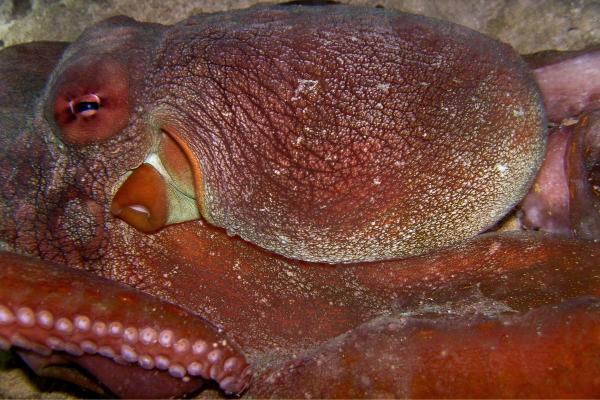
Maori octopus (Macroctopus maorum)
In the vast expanse of the Southern Hemisphere, from the shores of Australia to the coastlines of New Zealand, an imposing creature dwells – Macroctopus maorum, commonly known as the Maori octopus or the New Zealand octopus. T
his formidable invertebrate is recognized as one of the largest octopus species, with the potential to reach an impressive length of about 3 meters (9.8 feet).
Macroctopus maorum's coloration is as diverse as its habitat, ranging from warm orange-brown hues to purple-gray tones, often adorned with iridescent spots that shimmer under the water's surface.
As a venomous octopus, Macroctopus maorum possesses a potent saliva that plays a crucial role in its hunting strategy. When capturing prey, typically crabs and other crustaceans, the octopus delivers a swift injection of its toxic saliva, liquefying the internal organs of its victim, making for easier consumption.
While Macroctopus maorum is equipped with a powerful venom, it poses minimal threat to humans. No incidents involving serious injuries or fatalities have been reported. However, it is important to exercise caution when encountering these creatures, as their venom can cause localized pain, swelling, and numbness.
Despite its impressive size and venomous nature, Macroctopus maorum remains relatively elusive, rarely encountered by humans. Its preference for deeper waters and nocturnal habits contribute to its mystique.
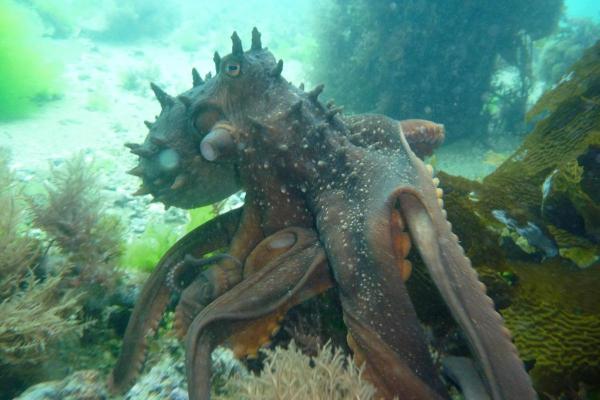
Caribbean reef octopus (Octopus briareus)
In the coral reefs and rocky habitats of the Caribbean Sea, from the Gulf of Mexico to the shores of southern Florida, resides a mesmerizing creature – the Caribbean reef octopus (Octopus briareus). This intelligent cephalopod is renowned for its remarkable adaptability, showcasing a diverse range of behaviors and defensive mechanisms.
Measuring approximately 1.5 kilograms (3.3 pounds) in weight and adorned with tentacles that can extend up to 60 centimeters (24 inches), the Caribbean reef octopus is a true master of disguise. Its skin is equipped with chromatophores, specialized cells that enable it to change colors and patterns with remarkable speed. This ability to blend into its surroundings serves as both an effective hunting strategy and a defensive measure against predators.
The Caribbean reef octopus is a skilled forager, utilizing its intelligence and problem-solving abilities to locate and capture prey. It primarily targets crabs, snails, and shrimp, employing its venomous saliva to immobilize its victims before consuming them. Its intelligence is further demonstrated by its ability to learn from past experiences, adapting its hunting techniques based on previous encounters.
When threatened, the Caribbean reef octopus exhibits a repertoire of defensive behaviors. It can release a cloud of ink to obscure its movements and create a distraction, allowing it to escape unnoticed. Additionally, it can expel a powerful jet of water to propel itself away from danger. These defensive measures reflect the octopus' remarkable adaptability and resourcefulness in a marine environment teeming with predators.
From poisonous bites to remarkable adaptations, discover the captivating realm of octopuses through 20 mind-blowing facts.

If you want to read similar articles to The Venomous World of Octopuses - Uncovering the Deadliest Species, we recommend you visit our Facts about the animal kingdom category.
- Animal Diversity web. (2020). Available at: https://animaldiversity.org/
- IUCN. (2020). The IUCN Red List of Threatened Species. Version 2020-2. www.iucnredlist.org








